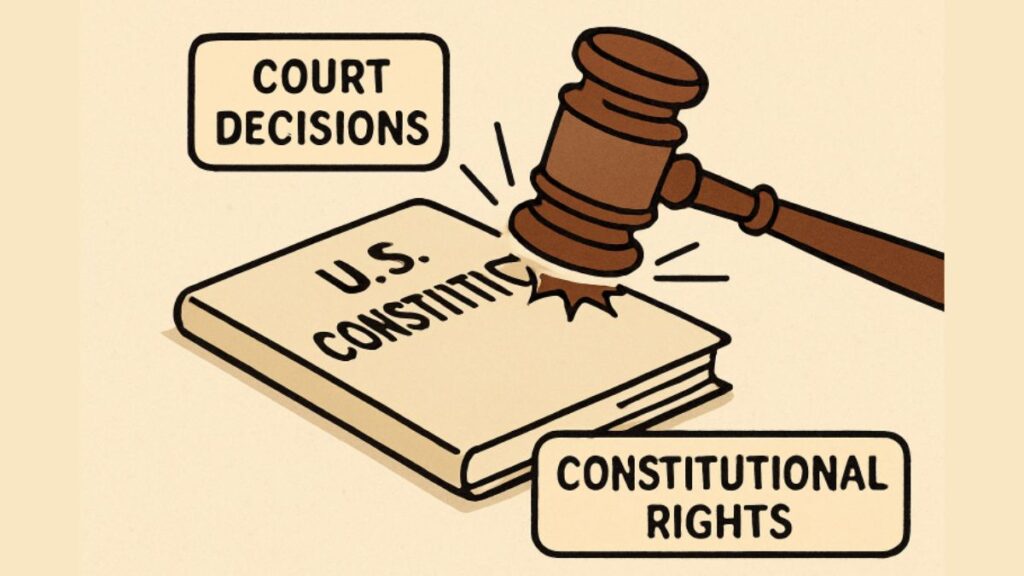Constitutional rights in the United States have always been dynamic—constantly reinterpreted and refined through critical court decisions. These rulings redefine the boundaries of individual freedoms, clarify government powers, and reflect the prevailing values and societal conflicts at any given time. The complex evolution of these rights can be traced through high-profile court proceedings and a vast list of Trump lawsuits and other politically charged cases, demonstrating how the judiciary both reflects and directs change.
The interplay between judicial decisions and real-world issues ensures that constitutional rights remain relevant and applicable in practice. Courts serve as arenas where social debates are translated into legal principles, and their decisions set precedents that either reinforce or redefine the limits of government action and personal liberty. Whether these rulings uphold, expand, or retract existing rights, their impact resonates far beyond the litigants in each case. Understanding how judicial rulings shape constitutional rights is crucial to appreciating the ever-evolving landscape of American law and democracy.
Landmark Decisions and Their Impact
Some court rulings become touchstones in constitutional law, fundamentally shifting how Americans understand and exercise their rights. One defining example is Roe v. Wade (1973), where the Supreme Court recognized a woman’s right to choose an abortion under the Constitution, shaping reproductive rights for generations. The precedent lasted nearly 50 years before being overturned by Dobbs v. Jackson Women’s Health Organization in 2022—a fresh illustration that constitutional interpretations can shift with new judicial philosophies or changing societal needs. These reversals reverberate, impacting not only legal processes but also broader social movements and public attitudes.
Other landmark cases—such as Brown v. Board of Education, which struck down racial segregation in schools, or Miranda v. Arizona, which established Miranda rights—illustrate the judiciary’s power to enshrine protections against injustice and discrimination. These decisions serve as milestones, steering the nation through periods of social strife and legal uncertainty.
The Role of Precedent in Constitutional Law
Precedent, known in legal terms as stare decisis, is the doctrine that compels courts to follow previous judicial decisions when the same points arise again in litigation. This consistency anchors the legal system, offering predictable guidelines for courts, lawmakers, and the public. When judges refer to case law established in previous decisions, they continue a tradition that both stabilizes the interpretation of constitutional rights and ensures gradual, thoughtful evolution.
However, precedent is not infallible; courts may overturn earlier rulings, particularly when societal values evolve or when previous decisions are deemed flawed or unjust. As the New York Times reports, the overturning of precedents typically reflects major cultural, political, or legal shifts.
Recent Cases and Emerging Trends
Contemporary court decisions continue to redefine constitutional rights in response to new social and technological challenges. In Held v. Montana (2023), young activists sued the state for supporting the fossil fuel industry, arguing that such actions violated their constitutional right to a “clean and healthful environment.” The Montana decision marked the first time a court recognized environmental rights as core constitutional protections for future generations—a trend gaining momentum worldwide as environmental issues become both urgent and justiciable.
Elsewhere, digital privacy, voting rights, and freedom of speech online are at the forefront of constitutional debate. Courts face new questions: How should the Constitution be applied to social media content moderation, government surveillance, or the spread of new technologies, such as artificial intelligence? The judiciary’s handling of these emerging issues will likely define constitutional law for years to come (The Atlantic).
The Interplay Between Judicial Decisions and Legislation
Court decisions do not operate in isolation. Often, judicial rulings prompt legislative changes, or vice versa, as lawmakers respond to court interpretations. In TikTok, Inc. v. Garland, the Supreme Court addressed whether the federal government could mandate the sale or ban of TikTok within the United States on grounds of national security. By allowing the law to stand, the Court not only reinforced Congress’s legislative breadth but also raised significant questions about privacy, free speech, and the limits of executive power.
This interplay creates an ongoing dialogue between the branches of government and the public, illustrating how all are engaged in shaping and interpreting constitutional limits.
Public Perception and Judicial Decisions
The legitimacy of judicial decisions relies greatly on public trust. Efforts to demystify complex legal rulings—such as the Arizona Supreme Court’s introduction of AI avatars to explain its decisions—aim to foster transparency and comprehension among ordinary citizens. Improving access to and understanding of judicial processes can help counter misinformation and build public confidence in the justice system (Reuters). Public education initiatives that simplify legal concepts and promote civic literacy play a crucial role in sustaining this trust. When citizens understand not only the outcomes but also the reasoning behind court rulings, they are more likely to perceive the judiciary as fair and impartial. Transparency also discourages political manipulation and helps ensure that judicial authority remains grounded in accountability rather than partisanship. In an era when social media can quickly distort facts, clear communication from the courts acts as a stabilizing force. Over time, these efforts can cultivate a more informed public—one capable of engaging critically and constructively with the nation’s most important legal debates.
Future Directions in Constitutional Interpretation
As new societal dilemmas emerge—from digital privacy and big data to climate action and advances in AI—courts will continue to grapple with questions their predecessors never imagined. Ensuring the Constitution’s protections remain meaningful will require judges to interpret age-old principles in ways that address modern realities. Future judicial approaches will likely emphasize adaptability, inclusiveness, and protection for vulnerable groups, reaffirming the living nature of constitutional law.
In conclusion, court decisions are both the mirrors and makers of constitutional rights. Through landmark cases, evolving precedent, and responses to contemporary challenges, the judiciary continually reshapes the boundaries of American freedom and justice. By staying informed about these developments, citizens better understand their rights and the perpetual evolution of the law.







